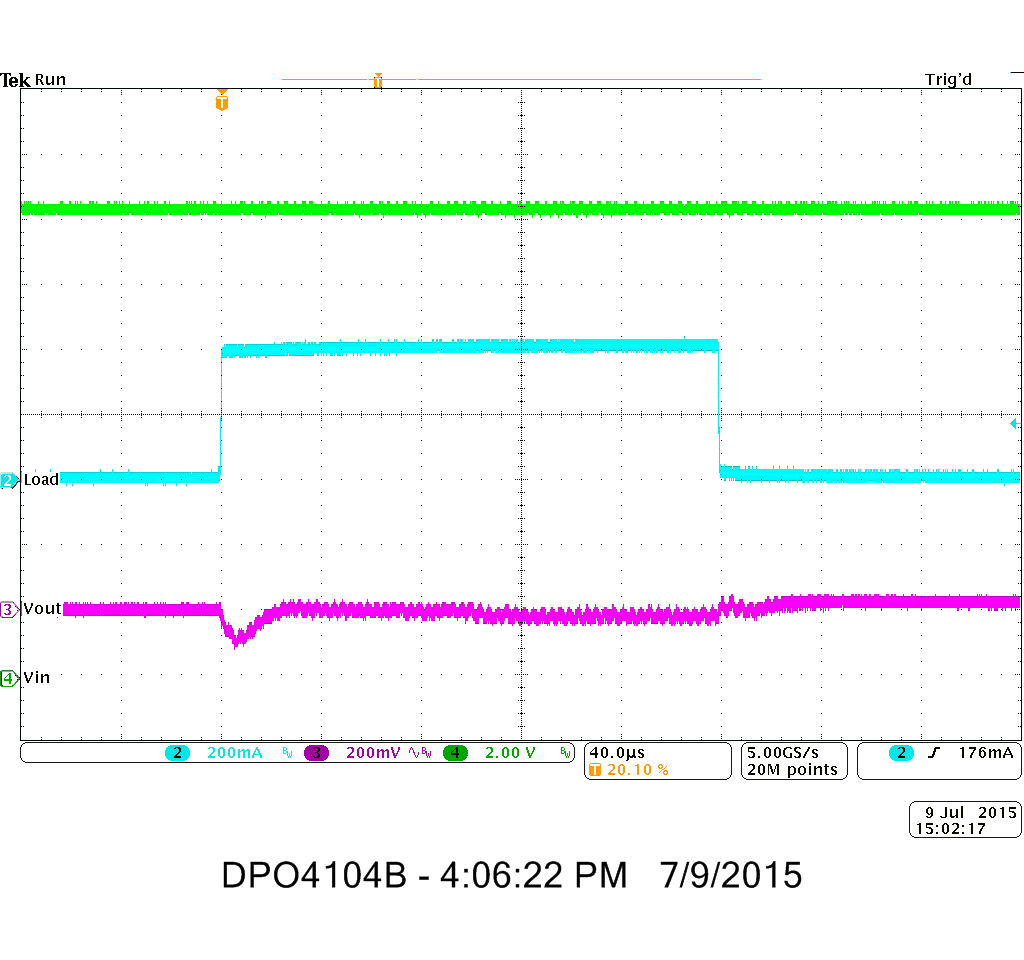See the attached schematic and BOM. The output is set to 12V. The input is typically 14.4V (battery pack) but will gradually decrease. The no load output is 12V. Load testing with resistors shows large fluctuations in output voltage from 12V down to 10.5V as the input decreases to 12V. The load resistor is 30 ohms. I have built several boards and none perform properly.
Qty Device Value Manufacturer Part Number Parts 1 CAP-0402 1uF TDK C1005JB1V105M050BC C3 1 CAP-0402 22pF Murata GRM1555C1H220JA01D C4 1 CAP-1206 33uF TDK C3216X5R1E336M160AC C1 1 CAP-1210 10uF Taiyo Yuden UMK325BJ106MM-T C2 1 IND-SRU5018 6.8uH Bourns SRU5018-6R8Y L1 1 RES-0402 71.5k Samsung RC1005F7152CS R1 1 RES-0402 680k Samsung RC1005F684CS R2 1 TPS62110RSA TPS62110RSA TI TPS62110RSAR U2


